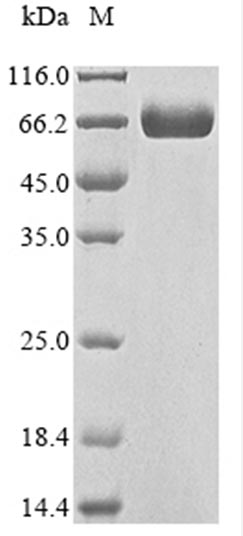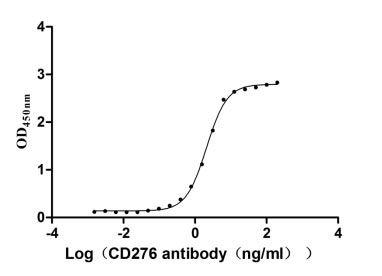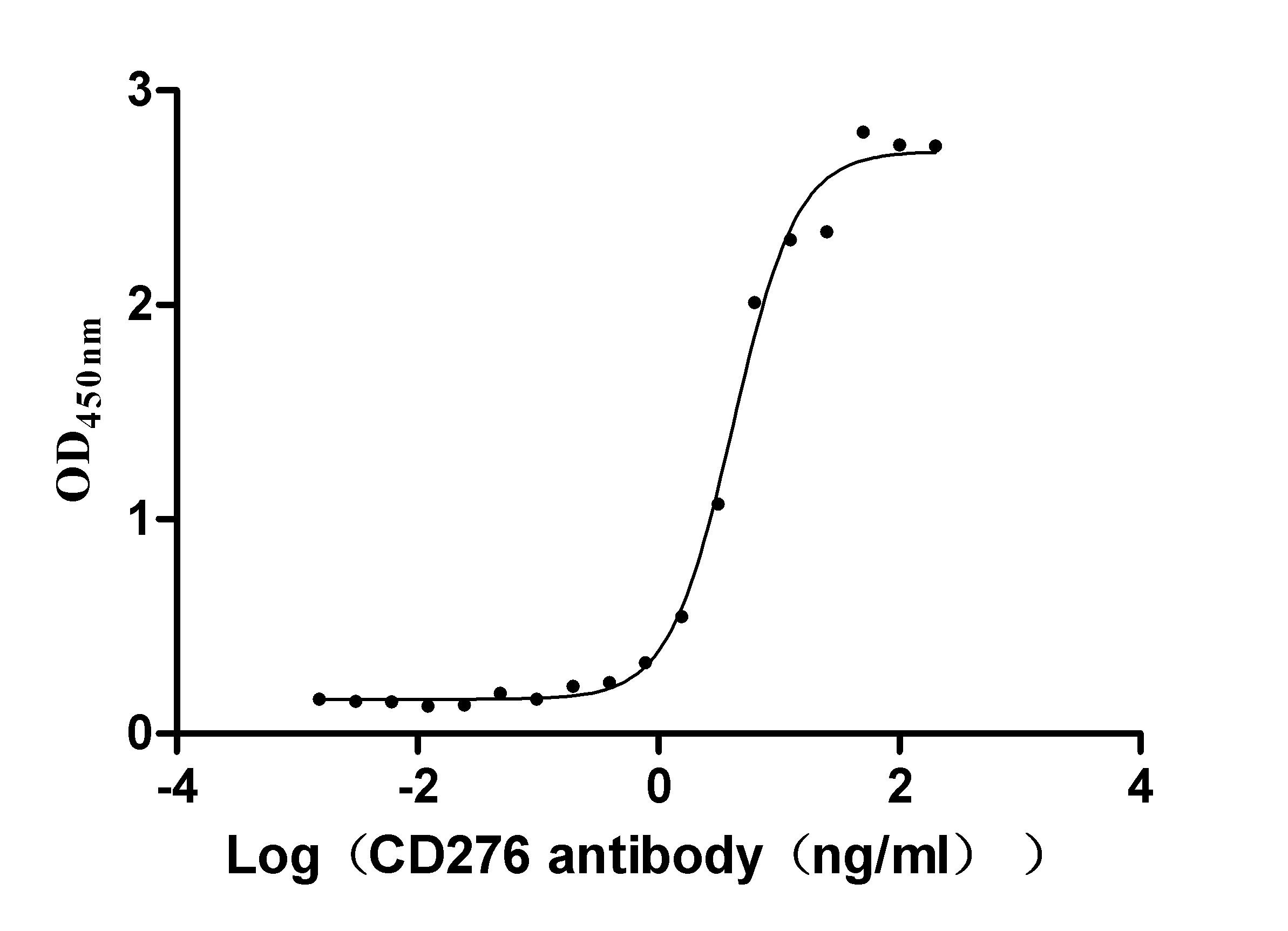The DNA fragment corresponding to Leu29-Gly245 of the human CD276 antigen is fused with an FC-Myc-tag at the C-terminus and then is expressed in the mammalian cells. The resulting product is the recombinant human CD276 antigen. Its purity is over 90% measured by SDS-PAGE. On the gel, this protein was migrated to the molecular weight band of about 60-80 kDa. The endotoxin content of this CD276 protein is less than 1.0 EU/ug as determined by the LAL method. Its bioactivity has been validated through an ELISA. In the functional ELISA, this recombinant CD276 protein can bind to the anti-CD276 antibody, and the EC50 is 1.961-2.243 ng/ml. This CD276 protein is available now.
CD276 is an immune checkpoint molecule in the epithelial-mesenchymal transition (EMT) pathway. It is involved in cell proliferation, invasion, and metastasis in malignancies. Overexpression of CD276 has been found in numerous solid tumors such as breast, colorectal, and lung cancer, and has been strongly linked to a poor clinical prognosis.









